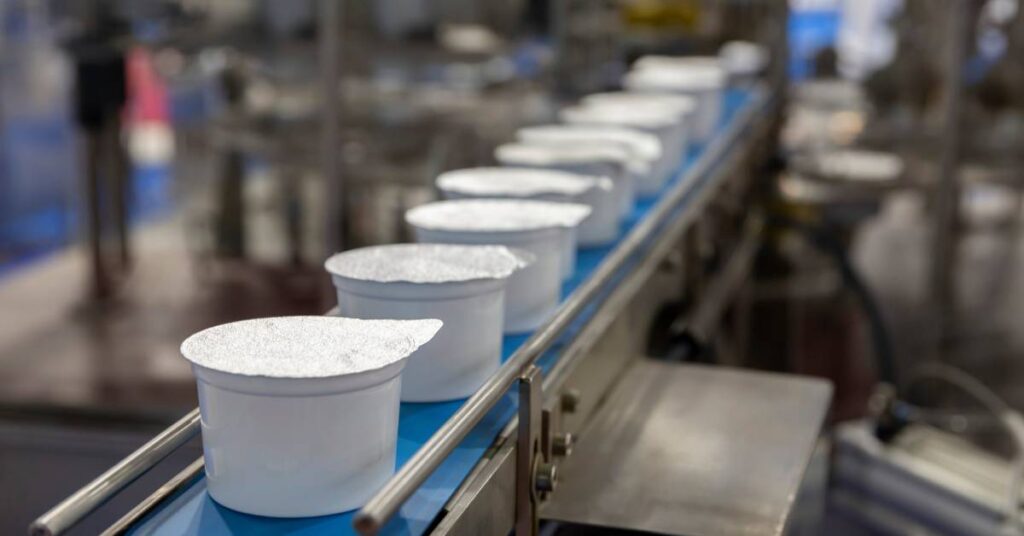Search
Additional Links Contact Us- Phone: (800) 423-4198
- Toll-Free: (815) 885-1900
- Email: [email protected]

ProMach is your partner from start to finish. Our product brands are grouped into distinct business lines that make the most sense to our customers, covering every function of the production line: Filling, Bottling & Capping, Decorative Labeling, Flexibles & Trays, Pharma, Handling & Sterilizing, Labeling & Coding, Robotics & End of Line, and Systems & Integration.
learn more
Single-serve packaging has revolutionized how products are consumed. From coffee pods and snack packs to beauty samples, this innovative packaging solution caters to consumer convenience, evolving lifestyles, and shifting market demands. However, it also presents unique challenges for manufacturers and environmentalists alike.
To get a better idea of how it works, we’ll cover everything you need to know about single-serve packaging, exploring its role in shaping modern manufacturing processes and consumer preferences.
Single-serve packaging refers to individually portioned containers designed for one-time use. Think about the yogurt cup you grab for breakfast or the laundry detergent pod you toss in the washer. These packages are engineered for convenience, sealed for freshness, and tailored to the modern consumer’s fast-paced, on-the-go lifestyle.
Single-serve packaging caters to consumers seeking portability, portion control, and reduced waste in terms of product spoilage. For manufacturers, this presents an opportunity to innovate by rethinking how products are delivered and consumed, ensuring a fresh experience every time. But does the convenience and consumer appeal outweigh the operational and environmental challenges?

Single-serve packaging offers multiple benefits for both consumers and manufacturers. Here are some of the ways it’s transforming the industry.
Single-serve products are perfect for consumers who are constantly on the move. Individually portioned packs allow for easy transport and consumption, whether consumers are commuting, traveling, or simply enjoying a quick snack.
Consumers are becoming increasingly health-conscious, and single-serve packaging delivers controlled portions that support calorie monitoring.
Single-serving packs are designed to maintain product freshness until the moment of consumption. This minimizes waste caused by opened and unused products.
Although highly advantageous, single-serve packaging presents certain hurdles for manufacturers and brands.
Manufacturing small, individually wrapped items often costs more due to the need for specialized machinery, packaging materials, and higher labor demands.
Single-serve products, while reducing spoilage, often contribute significantly to plastic waste and packaging inefficiencies. Consumers and regulators are demanding greener alternatives.
Producing single-use items requires precision, consistency, and efficiency on a large scale. For manufacturers operating within tight budgets, meeting this demand can become a logistical challenge.
Shifting to single-serve packaging reshapes multiple aspects of the manufacturing process.
Sourcing lightweight, durable materials that meet industry standards is crucial. Businesses must carefully balance cost, sustainability, and performance when choosing single-serve-compatible materials.
Manufacturers need specialized machinery to handle smaller portions effectively. Automation plays a critical role here, ensuring the packaging process remains efficient and free of bottlenecks.
Since single-serve formats are directly consumed, they require stringent quality checks to ensure consistency and product safety.
The smaller size means higher unit counts per shipment, but it also requires innovative packaging logistics to prevent product damage while in transit.

Increasing consumer demands and technological advancements are sparking innovations in single-serve packaging. Here are some of the advances that are making waves.
With increased awareness about environmental sustainability, companies are shifting to biodegradable, compostable, and recyclable materials for single-serve products. Bamboo trays and paper-based pods are examples of eco-friendly alternatives being embraced across industries.
IoT-powered packaging is taking consumer convenience to the next level. For example, smart coffee pods that sync with digital assistants to reorder products when stock runs low are becoming increasingly common.
Lightweight and minimalist designs are gaining popularity, reducing costs and using fewer packaging resources without compromising on product protection.
Manufacturers are prioritizing unique, custom designs for single-serve portions to create personal connections with consumers, making products visually appealing while emphasizing brand distinction.
Single-serve packaging has become an increasingly popular option among many consumers, but why? Here are the key drivers.
Busier consumer lifestyles demand convenience. Single-serve packaging fits perfectly into morning routines, commutes, and quick lunches.
Growing concerns about portion control and dietary intake are shaping buying habits. Products like nut butter singles or protein shake sachets are skyrocketing in demand among health-conscious buyers.
Brands are leveraging single-serve packaging for subscription services, offering consumers curated, limited quantities while exploring product variety.
This evolving demand pushes manufacturers to redefine convenience while blending it with innovation and sustainability.
Single-serve packaging has long been scrutinized for its environmental impact. Many products rely on plastics that contribute to landfill waste, which has become an increasingly challenging issue in today’s eco-conscious world. However, advancements in sustainable practices are creating promising opportunities.
Bioplastics, compostable films, and paper alternatives are becoming mainstream options for single-serve packaging.
Certain brands offer closed-loop recycling initiatives, where consumers return used packages that can be repurposed.
Businesses are educating consumers about proper disposal methods, often including instructions to do so directly on the packaging.
While challenges remain, the push toward greener solutions demonstrates the manufacturing industry’s commitment to reducing its collective carbon footprint.
The future of single-serve packaging is undoubtedly bright as consumer demands, sustainability efforts, and technological breakthroughs collide. Here are some promising predictions:
Manufacturers who prioritize innovation and sustainability in this space will be the ones to lead the evolution of single-serve packaging, unlocking unmatched consumer loyalty and operational efficiency in the process.
Single-serve packaging has transformed the consumer experience, offering convenience, quality, and portability. But its adoption also demands thoughtful consideration of environmental impact, production challenges, and market trends. For manufacturers and brands, keeping a finger on the pulse of single-serve innovations can mean the difference between staying ahead or falling behind. By considering everything you need to know about single-serve packaging, you can ensure your organization thrives in this dynamic landscape.
Ready to upgrade your equipment to meet the growing demand for single-serve packaging? HMC Products is a trusted pouch packaging machine manufacturer, offering excellent value and insights so you can take your business to the next level.